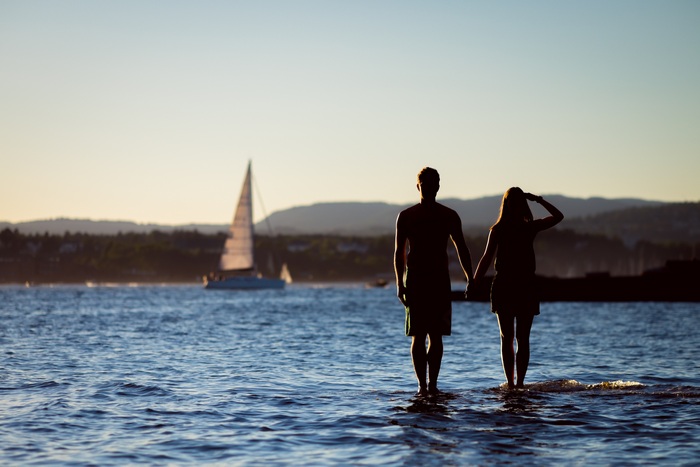After Africa, I have at least four more big trips planned:
- West and Central Asia (the Middle East and the "Stans").
- East Asia.
- The Islands (Oceania and the Caribbean).
- South America
I spell out the timing of those trips in my future plans.
Today, I'm going to focus on #3: the islands.
In the 2020s, I plan to buy a sailboat and visit all the countries of Oceania and the Caribbean. There's only one problem: I don't know how to sail.
I have sailed about ten times in the San Francisco Bay, which some consider an excellent training ground given the brisk winds.
On the other hand, I didn't know what I was doing. When someone told me to pull some rope, I would do that. That's like someone telling you to press the hazard lights button on a car when you're a passenger - that hardly prepares you for driving.
What type of person are you?
There are two types of drivers:
- Car aficionados: these car geeks revel in all the details about a car.
- The cars-are-simply-tools crowd: for most of us, a car is just a means to get us from point A to B. Of course, you probably prefer a fancy car, but you're not going to geek out about all its inner workings like a proper car aficionado.
Although I know little about sailing, I suspect sailors fall into the same two categories. However, there is probably a higher percentage of sailors who are aficionados versus the percentage of drivers who are aficionados.
I'm definitely in category 2 for both sailing and driving. I see cars and boats as simply vehicles that facilitate my travels. I don't get into the mechanics of the vehicle itself.
I'm so disinterested in driving that I'll undoubtedly be an early adopter of self-driving cars. Which brings me to my next point . . . .
Sailing the Caribbean in Style
Macho men get goosebumps thinking about tacking a sailboat during rough seas, but this turns me off. Here's my dream Caribbean sailing vacation: I tell my sailboat, "Set your course for Turks and Caicos. Wake me up when you get within one kilometer of the port. Goodnight."
In principle, it seems that a self-driving sailboat is an easier task to accomplish than a self-driving car. First, the seas are far more open than narrow roads - and there are no slopes to deal with. Second, there are fewer obstacles at sea than on a city street. However, there's far more money being placed into self-driving cars than self-driving boats.
It's a pity because the benefits are enormous. Instead of being constantly vigilant (and sleep-deprived) while sailing at night, you can sleep soundly, knowing that the robotic sailor is more aware of its surroundings than you would ever be. Weather forecasting could combine with radar and other technologies to lead the way.
So, where do we stand now? Is my Caribbean sailing fantasy achievable now? If not, when?
Autopilot 2017
The first level of self-sailing boats is already here. They're called "autopilots." Just like the 2017 autopilot on a Tesla is limited, the 2017 autopilot on a boat is limited. You can point it on a course to Bermuda, but it's not intelligent enough to dodge another boat. Instead, you still have to rely on your radar to warn you of the oncoming boat. Then you have to switch it to manual, avoid the boat, and put it back on autopilot.
Also, above-deck autopilots are flimsy and prone to breakdowns. If you want to sail from St. Maarten to Cuba and then to Panama, you'll want a more expensive below-deck autopilot.
In short, today's autopilots are pretty stupid. They won't automatically raise and lower your sails, nor will they work well when you want them (in heavy swells).
Robotic sailboats
What I want is a fully autonomous sailboat. Unfortunately, the only existing ones are so small that they would fit in your bathtub.
In the 2014 Microstat race across the Atlantic, the farthest a robotic sailboat went was 400 km (300 miles), and then got disqualified when it ran into a fishing boat.
In 2019, however, a boat had already made it halfway across the Atlantic (3 times the previous record) after a month of sailing! You can track its slow progress. If it doesn't make it to Ireland this year, next year, they will surely make it.
There's even a World Robotic Sailing Championship and International Robotic Sailing Conference. But don't book your robotic sailing trip to the Caribbean just yet. The maximum length of the robotic boats is just 4 meters - only a bit bigger than your bathtub.
There's other progress being made, reports Wired.
In 2020, the Mayflower Autonomous Ship (MAS) celebrated the 400th anniversary of the Mayflower crossing by doing it in a fully-autonomous boat. The difference is that it won't be a bathtub-sized boat. It will be 32.5 meters long and 16.8 meters across (106.6 x 55.1 ft).
In a voyage lasting 40 days and conquering approximately 3,500 unmanned miles at sea, the Mayflower Autonomous Ship arrived in North America in Halifax, Nova Scotia, on June 5, 2022.

These and other innovations show that in the 2020s, we may have fully autonomous sailboats so that you can have a genuinely relaxing Caribbean vacation. What would you do with all that free time? Perhaps you could work remotely on your sailboat, and when you're done, you can plop yourself on a beach at a luxury resort in the Caribbean.




